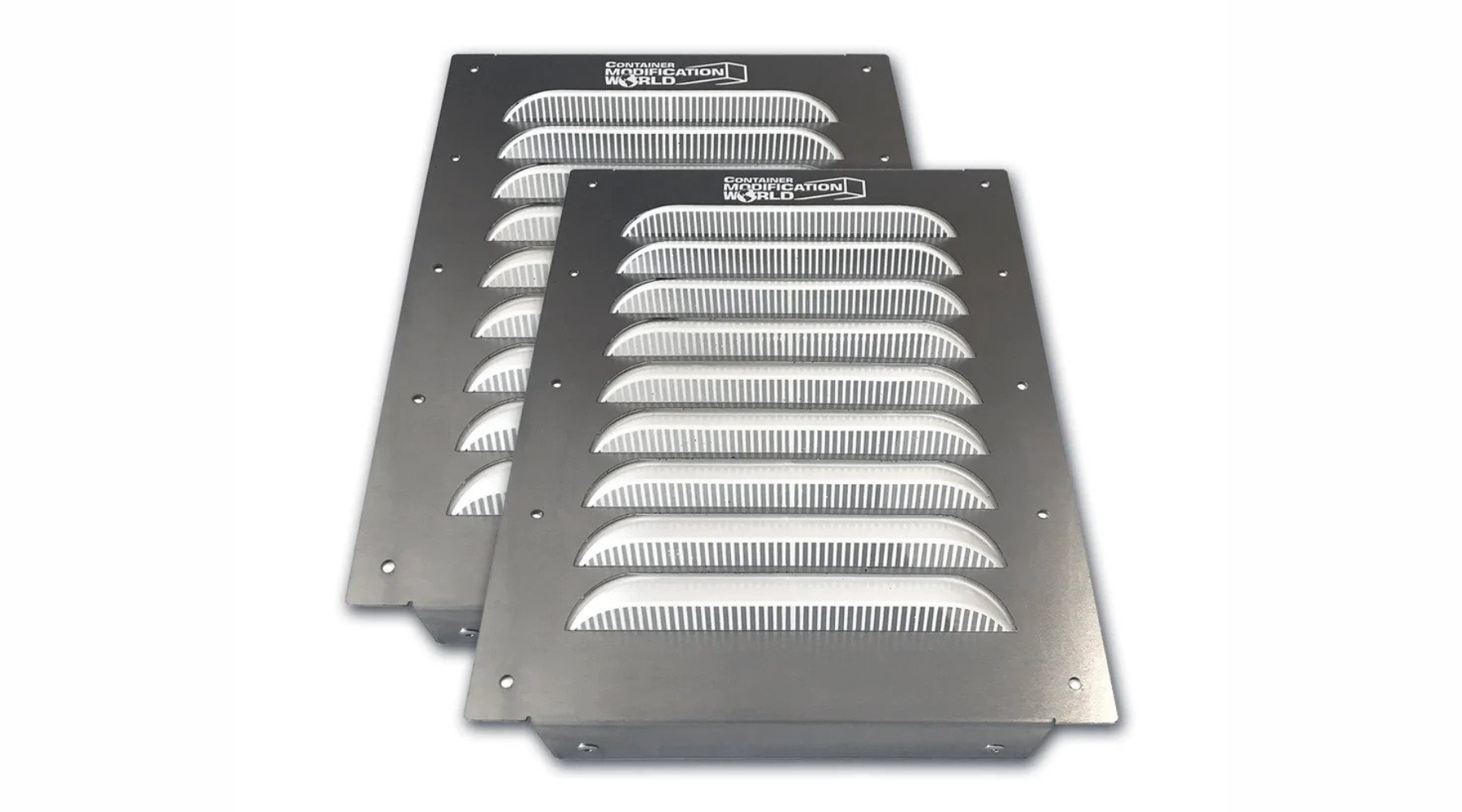Container Modification World is always on the cutting edge of technology when it comes to Shipping Container Modifications and Accessories.
One of the easiest and most important DIY Container Modifications you can do is to install proper vents to prevent humidity and condensation.
If condensation builds up inside a container, the product you have inside can be damaged and it can cause mold to build up.
Choosing the best vent option is important.
Other vent designs can only be installed tight up against the top rail of containers. They also stick out up to 4", causing the container doors to damage the vents when they fully swing open.
And if your vent protrudes outward it can add width to a container, which may require the need for over-width permits to transport.
To solve this issue, we engineered the new BIG AIR 45 Container Vent that can be installed anywhere on your shipping container. You can install it from floor to ceiling against the side walls, end walls or doors.
The newest design of the Big Air 45 comes with a Screen!
Our high-quality Bug Screen Attachments are easy to remove and clean!


Why you should go with Big Air 45 Vent
Computer modelled design
With our state-of-the-art computer modelled design, this vent will eliminate moisture and excess heat. And because it is made with highly durable Polypropylene and Aluminum, it will never rust!
Easy installation and marking guide
The BIG AIR 45 comes with a marking guide to make cutting a hole as easy as possible! Rivets and self-tapping screws are also included (we recommend using rivets).
Variables that can cause condensation
The variables inside a shipping container are always changing. When the combination of those variables create an environment prone to humidity, condensation will happen. The above mentioned variables include, but are not limited to, the following:
- Humidity
- Interior temperature
- Exterior temperature
- Wind direction
- Wind speed
- Foundation
- Adequate air flow under the container
- Direct sunlight to roof
- Direct sunlight to walls / doors
- Type of contents stored
- Volume of contents stored inside
- Color of container
- Specifically the roof
- Number of stock vents in the container
Unfortunately, stock container vents are not enough to prevent condensation. Typical used containers have between 2 and 4 vents and the actual total air passage hole is about the size of a dime. These vents are designed to keep sea water out and are meant more as a method to equalize pressure than exchange air.



